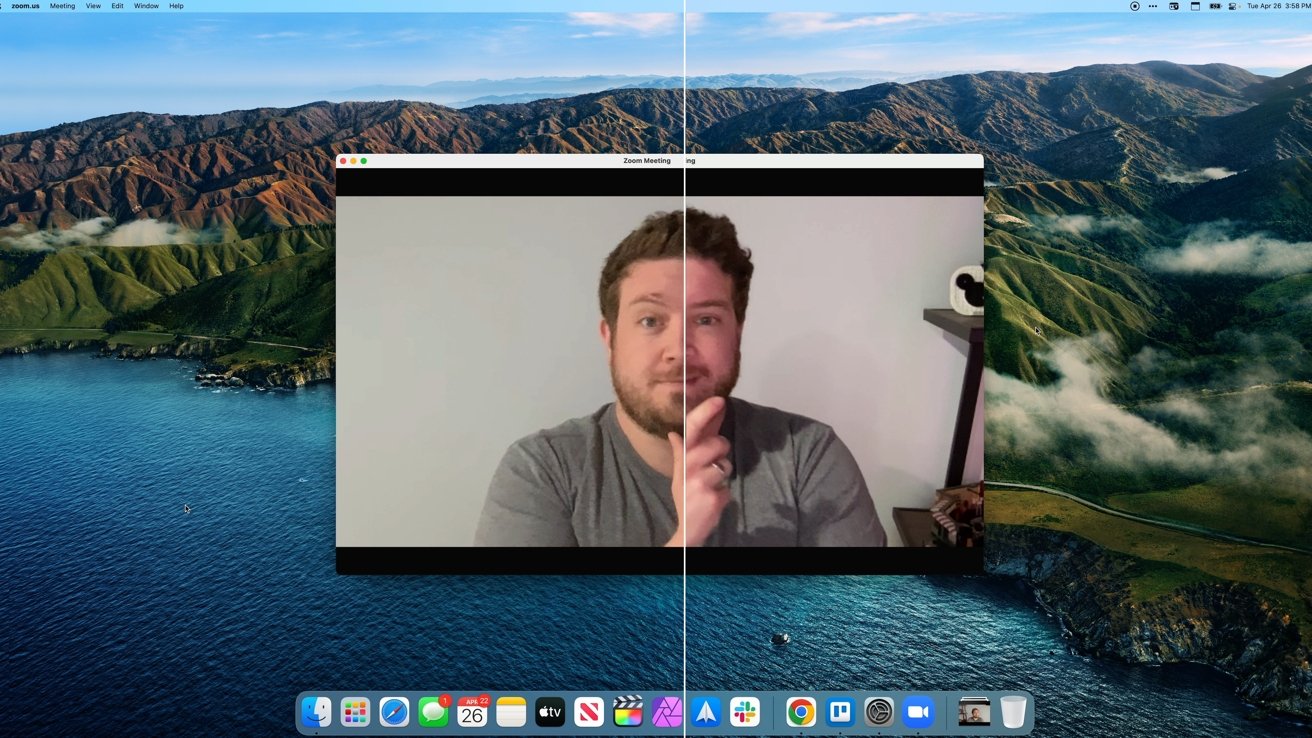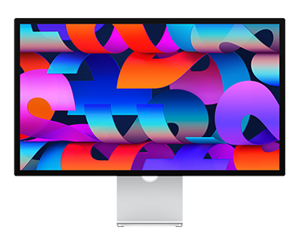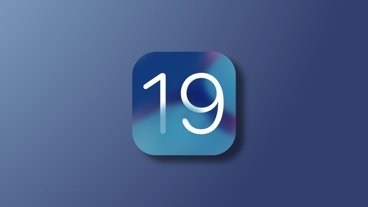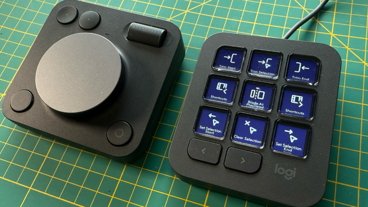Now that macOS 12.4 has been released out of its beta cycle, we can see how the corresponding update to the Studio Display performs and whether or not significant performance improvements have come to fruition.
During the beta phase, Apple continued to iterate on updates to the display's built-in webcam as well as to its stability and performance. With the third beta of macOS Monterey, we got our first peek at the camera improvements.
The changes were subtle but noticeable. Side-by-side, there do appear to be improvements in the image quality.
We placed our Studio Display in our production studio so that we could keep the lighting and environment consistent. We filmed a few videos in the FaceTime app, QuickTime, and in Zoom using the Studio Display's camera.
In our testing, we saw that Apple had greatly improved skin tone reproduction. A face that was red before the update had a more natural color afterward. The details also looked less noisy, and we're guessing Apple reduced the noise with additional smoothing.
Center Stage is now a bit less aggressive post-update. It doesn't crop in as tightly on a face, leaving a bit more room above our head. Hard to say whether this is good or bad and is something we'd prefer to have control over.
Full release is upon us
Apple has now released macOS 12.4 alongside 15.5 of the Studio Display firmware. Unfortunately, things don't seem to be much improved from our initial impressions.
In our continued testing, image quality on the camera hasn't progressed from its beta days. That means the 15.5 update has some improvement from the firmware the monitor shipped with, but isn't a magical solution to Apple's subpar camera issues. Unless you are putting the images side-by-side, it will be hard to spot much difference.
Where to Buy
For a limited time, AppleInsider readers can save $50 on AppleCare for the Apple Studio Display at Apple Authorized Reseller Adorama. To activate the promotion, you must shop through this cost-saving activation link and enter promo code APINSIDER during checkout. Step-by-step activation instructions can be found on this help page.
Want to see how the offer stacks up? Comparing prices across leading Apple resellers is easy in our Apple Display Price Guide.
 Andrew O'Hara
Andrew O'Hara









-m.jpg)







 William Gallagher
William Gallagher
 Andrew Orr
Andrew Orr
 Mike Wuerthele
Mike Wuerthele
 Bon Adamson
Bon Adamson
 Marko Zivkovic
Marko Zivkovic
 Wesley Hilliard
Wesley Hilliard
 Amber Neely
Amber Neely




-m.jpg)



4 Comments
It’s really too bad they didn’t just put tvOS on these with a Mac display app in it. They could have even had a FaceTime app so the display could also optionally function as a stand alone device… and then use the remote or connected Mac to control it…
eventually once the APIs were stable, third parties could then implement their own “connected Mac” apps if there was any advantage/market for it.
Will wait until the fall to see if Apple makes any more "improvements" to their new monitor. Frankly, I will not use the "FaceTime" feature at all and would love to clip the wires to the speaker/microphones (big Brother is listening all the time, don't you know?) and block the camera system.
Also, I will wait on the second generation "M" processors before any more purchases of Apple computers. I have the MBAir M1 with 16GB of ram and a 1TB SDD and a 14" M1 Max Mac Book Pro upgraded to 64GB of memory, maximum processors and a 4TB SSD. Single core at startup is actually faster on the MBAir. The M1 series all have nearly identical single core ratings. So for many older programs, there is no improvement in performance with the 14" MBPro. Luminar Neo could use all of the "Max" cores.
I would like to order the Mac Studio second generation for the reasons above. It would replace my aging 2013 MacPro that has 128GB of Ram and a 2TB SSD.
This redness is also showing on iPhone 13 mini photos.
It doesn't matter how many software updates Apple releases, you can't fix a bad hardware choice. Apple should not have used the lower quality ultra-wide camera from the iPhone 11. Center stage is unnecessary on a non-moving desktop monitor. The image quality will always be bad because of the camera, not because of the software trying to run it.